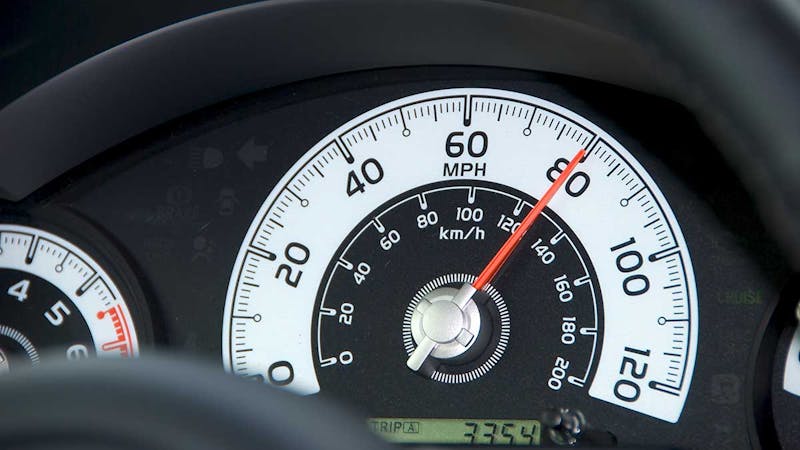
Traffic safety advocates — including an advocate with a special connection to Feldman Shepherd — scored a major victory in their fight to reduce a crisis of fatal accidents on Roosevelt Boulevard.
On December 14, 2023, Gov. Josh Shapiro signed a new law that makes speed cameras along Roosevelt Boulevard permanent. The cameras — formally called automated speed enforcement (ASE) cameras —were part of a pilot program in which a network of cameras went up on the Boulevard starting in mid-2020. Since their installation, Roosevelt Boulevard has become much safer with 95 percent fewer speeding violations, 21 percent fewer fatal and serious-injury crashes, and 50 percent fewer crashes involving people walking, according to Philadelphia’s Vision Zero project. The cameras, managed by the Philadelphia Parking Authority (PPA), are also credited with saving about 36 lives since they went live.
While the speed limit on Roosevelt Boulevard is 45 MPH, drivers sometimes clocked speeds over 130 MPH before the cameras were installed, according to the PPA.
Between 2012 and 2021, 119 people, including 49 pedestrians, died in accidents along Roosevelt Boulevard, according to PennDOT data. Four of those fatalities were 27-year-old Samara Banks and her three young sons, ages 1, 4, and 7, who had just visited an aunt in July 2013 and were walking home, crossing at 2nd Street on Roosevelt Boulevard when they were struck and killed by a 24-year-old driver who was street racing.
Feldman Shepherd motor vehicle accident injury attorneys John M. Dodig and Jason A. Daria have represented five families — including the Banks family — in connection with fatal pedestrian accidents on Roosevelt Boulevard and said that dangerous roadway design was a critical factor in all of them.
The Boulevard is a 12-lane highway that essentially functions as an urban street through densely populated residential and commercial neighborhoods. Its design is chaotic, with crossovers connecting the local (outer) lanes to the express (inner) lanes. The chaos and danger are compounded by traffic which enters and exits the Boulevard via left and right turns from cross streets. Despite the peril, an urban mix of department stores, restaurants and residential neighborhoods gives pedestrians lots of reasons to attempt to cross the 12 lanes of high-speed traffic. As some crossings are longer than a football field, it may take multiple light cycles for pedestrians to make it from one side to the other.
With respect to the accident that took the lives of Banks and her children, the crossing they used was designated by cement sidewalks across the medians separating the Boulevard’s inner and outer drives. The sidewalks served as an invitation for pedestrians to cross at that location, with an assurance that it was safe. It was a false assurance, as the crossing was not controlled by a traffic signal, there were no pavement markings and there were no warning signs to alert drivers that pedestrians might be crossing ahead. Compounding the problem, an elevation in the roadway impeded the sight line for both Banks and the motorist who struck her and her children.
As a result of the litigation involving Banks and her children, safety improvements were made at the accident site. The concrete sidewalk on the medians was removed, grass was planted in its place, and a “no crossing” sign was installed. The dangerous crossing was replaced with a new crosswalk that has pavement markings, a traffic signal, and signs further north with better sight distance. The new crossing is named “Banks Way.”
Latanya Byrd, the aunt of Samara Banks and grandaunt to her boys, became an advocate for safe streets in the aftermath of the crash that stole two generations of her family. She co-founded the Greater Philadelphia chapter of Families for Safe Streets and has worked tirelessly with Pennsylvania lawmakers and traffic safety advocacy groups to prevent other families from suffering tragedies similar to her own. She and other activists fought mightily for speed cameras on the Boulevard, and then to expand the program to other corridors around the city. The new law adds five new corridors and five new school zones to Philadelphia’s speed camera program. It also makes a pilot program initiated in 2020 for speed enforcement cameras in highway work zones permanent.
The law is the second major victory for Byrd and her fellow advocates this past year. In January 2023, the City of Philadelphia was awarded $78 million in federal funds to make major safety improvements along the Boulevard. The funding is part of the bipartisan infrastructure law that passed in 2021. U.S. Senator Bob Casey said it would allow the city to install new median barriers, realigned crosswalks, upgrade traffic signals, and create new Business Access and Transit lanes to make it easier for buses to travel and reduce accidents.
Every day at Feldman Shepherd, we are inspired by so many of our clients who turn their grief into purpose and work resolutely to save lives and prevent injuries in the future. We extend our gratitude and appreciation to Latanya Byrd — and all who have advocated for a safer Roosevelt Boulevard — and celebrate their momentous victory.

